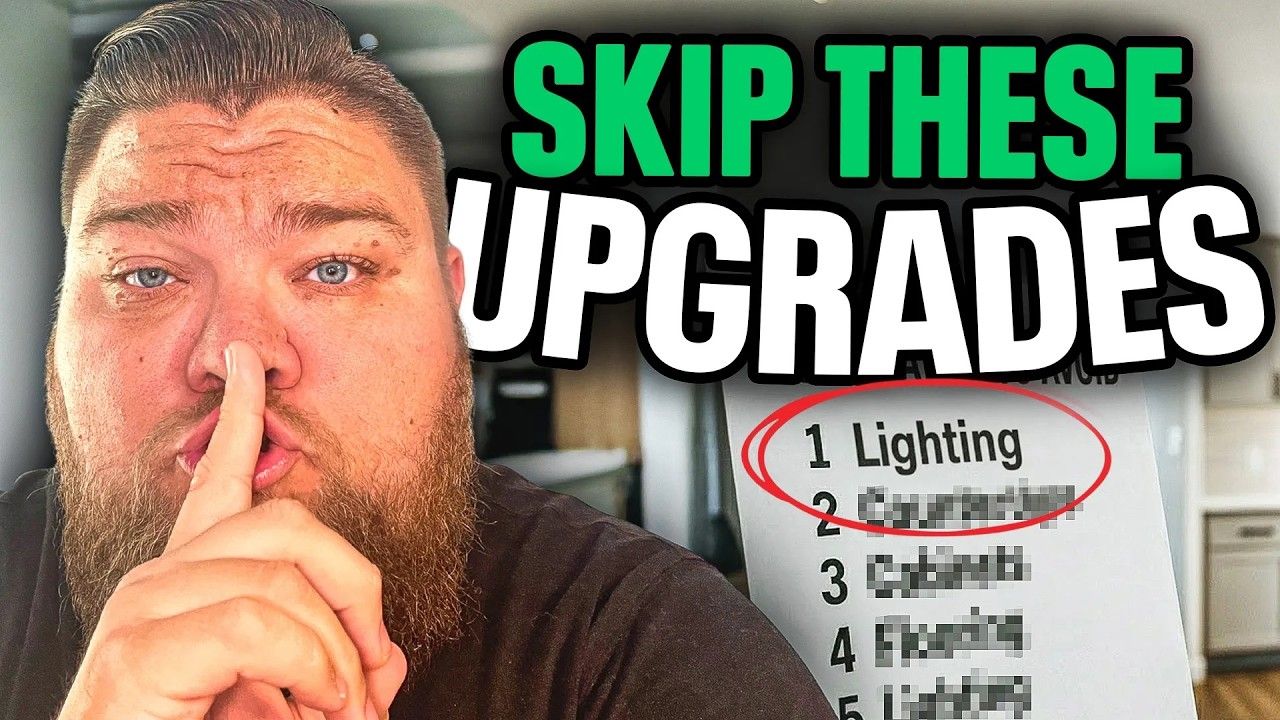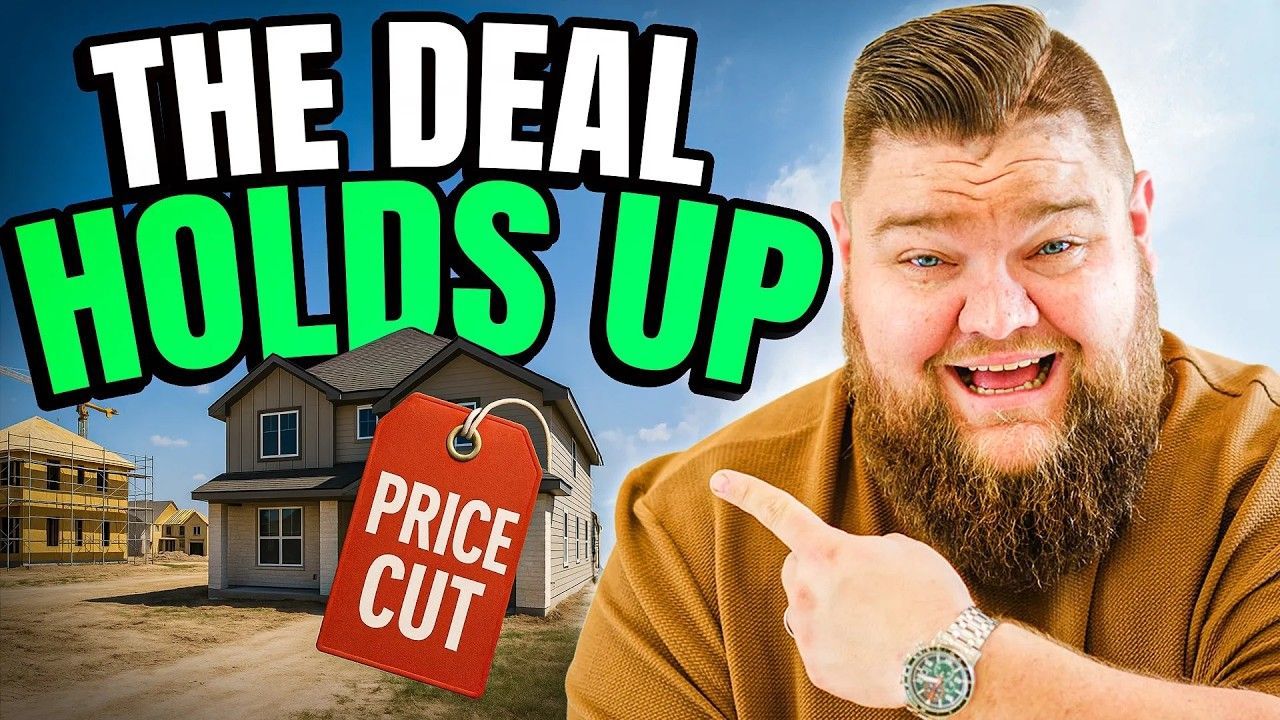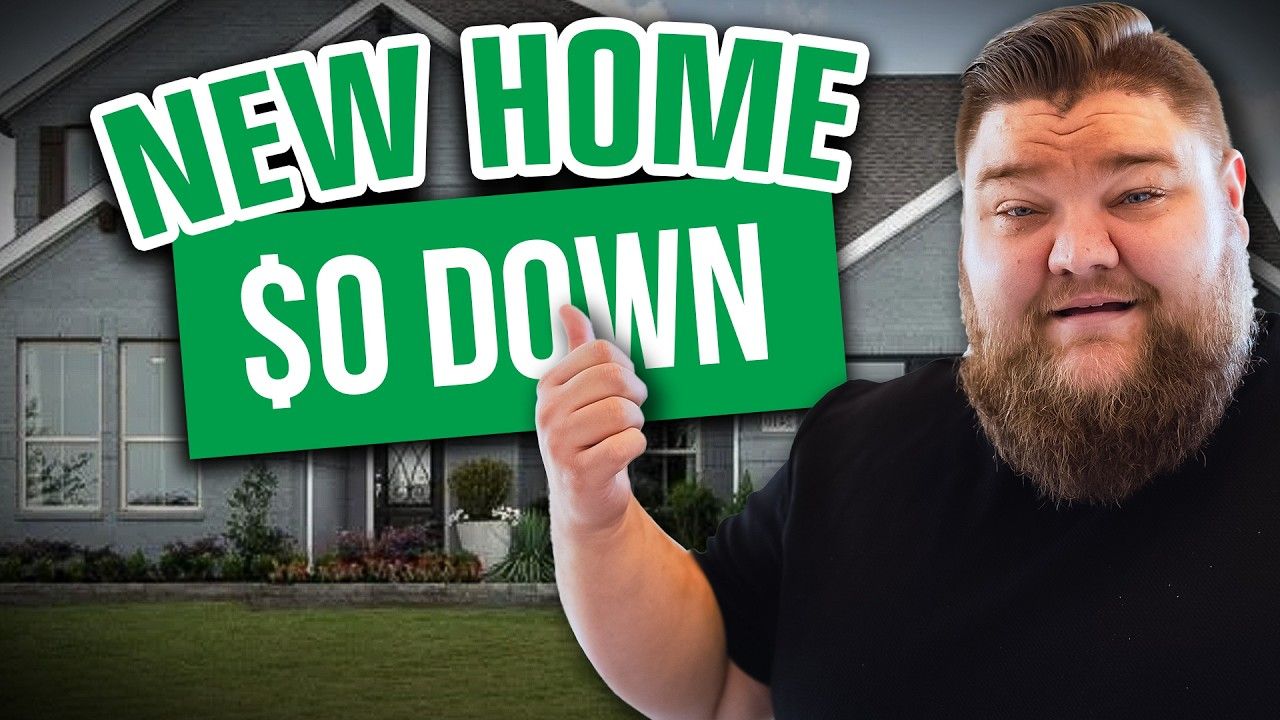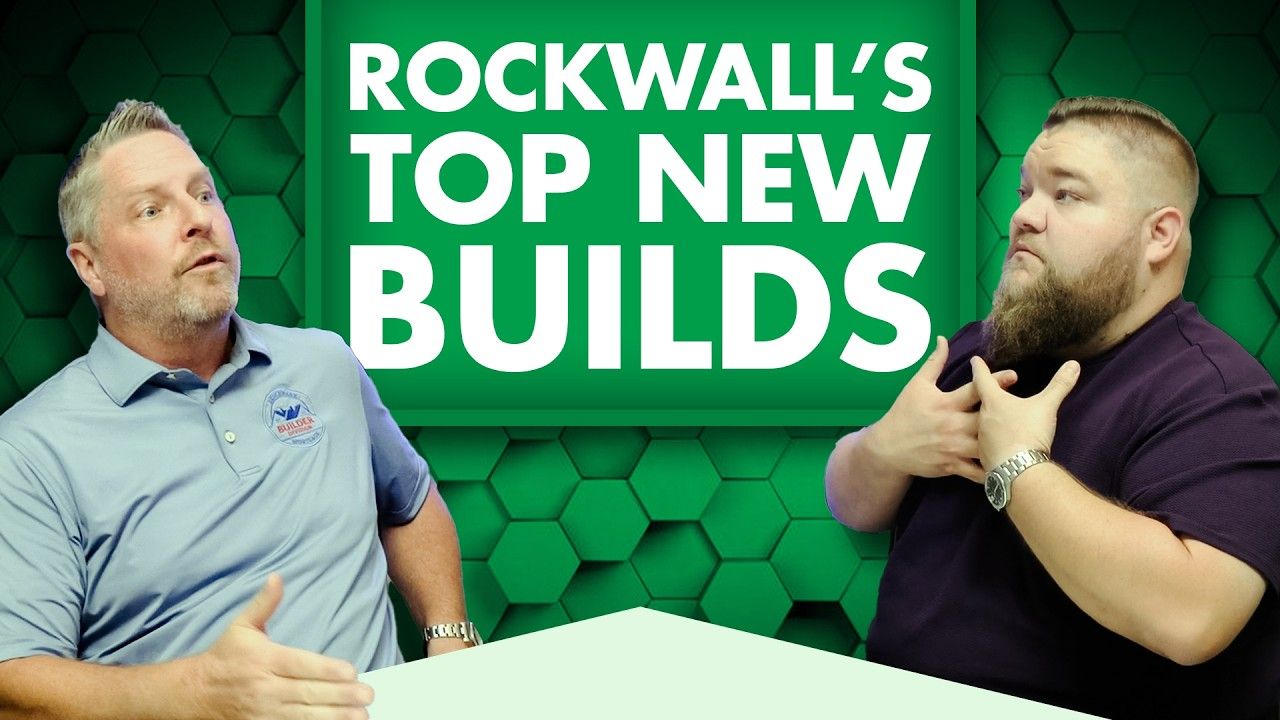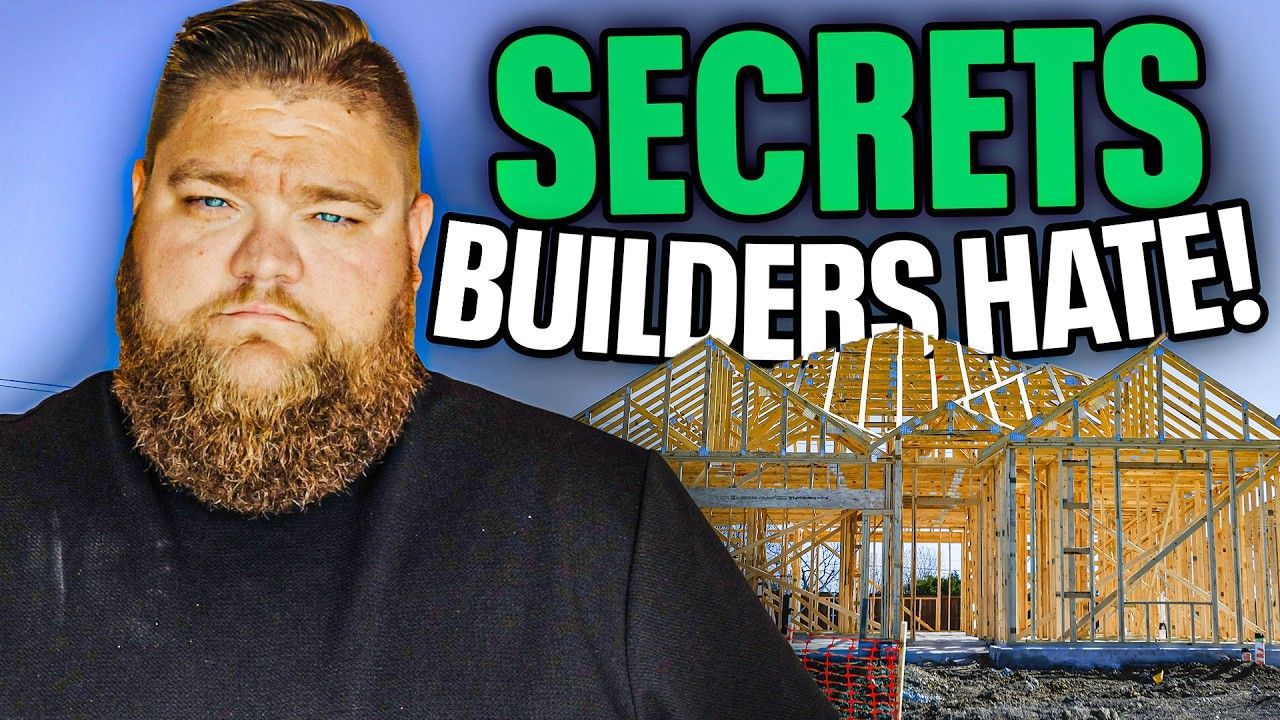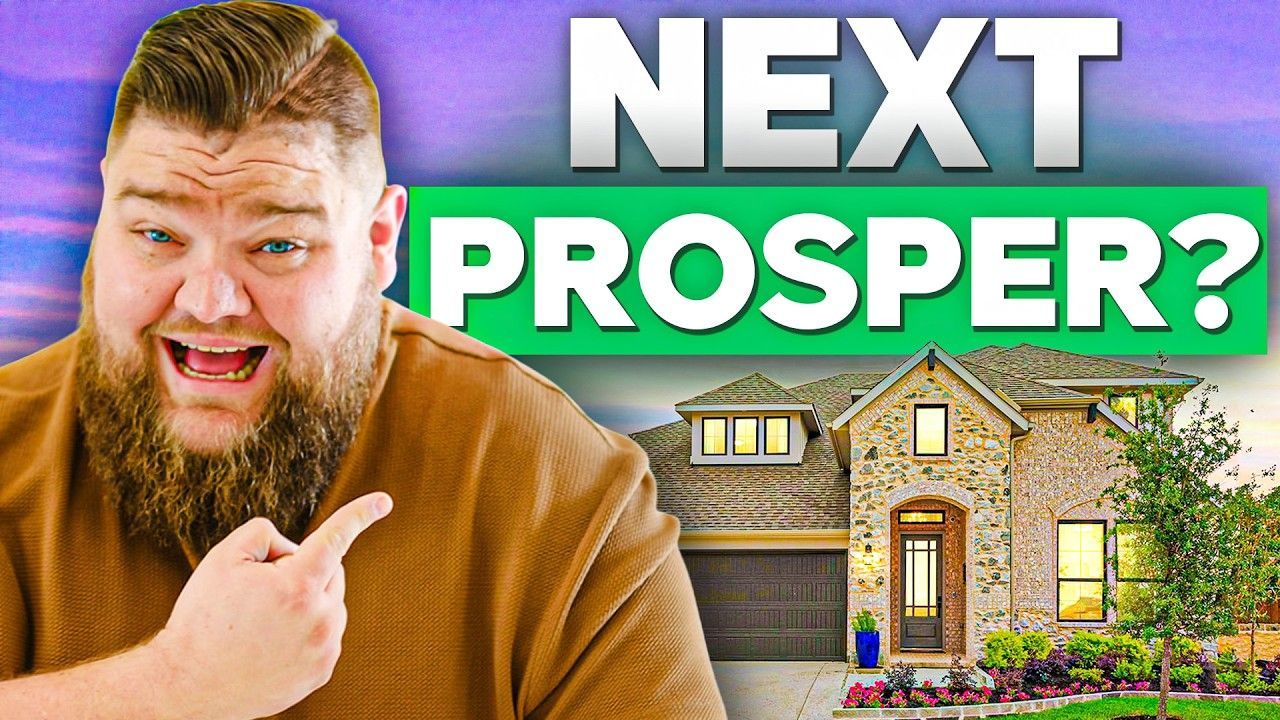How to Beat High Mortgage Rates in DFW (and Save Big)
In this post I’m pulling together everything we talked about in my recent conversation with mortgage lender Jared Wilson — the full, honest breakdown on how buyers can navigate high mortgage rates, maximize builder incentives in the Dallas–Fort Worth (DFW) market, and make smart decisions when buying new construction. If you’re thinking about buying a new build in DFW (or moving here), this is the kind of practical, tactical advice you want in your corner.
Table of Contents
- Intro
- Jared Wilson as Mortgage Lender
- Using Preferred Builder Lender
- Mortgage Rates: When Will They Improve?
- Price Reduction vs. Incentives: Which Wins?
- Property Taxes: The Hidden Affordability Killer
- Incentive Options: Which Should You Choose?
- How to Get Pre‑Approved (and Why You Should Do It Now)
- Forward Commitment Buy-Downs: What They Are and When They Appear
- Jared Wilson’s Advice to First‑Time Buyers
- Inventory or Build: Which Is Better?
- VA Loans and Disabled Veteran Property Tax Exemptions (Important Detail)
- Closing Day Reality Check
- Builder Relationships and Who Jared Works With
- Practical Checklist: Steps to Take Before You Buy New Construction in DFW
- Common Mistakes to Avoid
- FAQs on How to Beat High Mortgage Rates in DFW
Intro
We sat down with Jared Wilson — a lender with over a decade of experience who now focuses on new construction lending — to walk through the realities of today's mortgage environment and how to use builder incentives to your advantage. This isn’t theoretical. These are the tradeoffs, the math, and the strategic decisions we see every week on real deals in DFW. I’ll give you the highlights, examples, and the exact questions I want you to ask your lender and builder before you sign anything.

Jared Wilson as Mortgage Lender
Quick background on Jared Wilson: he’s been in mortgages for roughly 13 years. He started at a high-volume call center, moved to a traditional mortgage shop for a decade, and recently shifted into a role at Benchmark Mortgage focused on building deep builder relationships. That path matters. Jared Wilson's experience building trust and systems with builders is why he’s often the preferred lender on communities—because he understands what’s happening behind the scenes.
Two business models came up during our chat that are worth highlighting: market-share vs. client-share.
- Market-share: Take a hundred deals from a hundred people. Volume-driven.
- Client-share: Do fewer deals but build deep relationships and specialize in helping those clients and partners. That’s Jared Wilson’s approach.
For new construction, I prefer the client-share model — lenders who know builders’ paperwork, timing, and underwriting quirks. It makes these longer, more complex transactions dramatically smoother.
Using Preferred Builder Lender
Let’s clear the air: you do NOT have to use the builder’s preferred lender. You’re free to choose. But there's a reason many buyers end up using in-house or preferred lenders:
- Preferred lenders know the builder’s processes and underwriting requirements.
- Preferred teams work with the same title companies and appraisal firms, so the entire package comes together faster and cleaner.
- Builders often tie the majority of their incentive money to using their preferred lenders — that extra money is how they compensate for the additional overhead lenders take on with new construction deals.
Jared Wilson used a sports analogy that stuck with me: “You could put any five people on a basketball court and play, but a championship team is something different.” The same is true here. The preferred team has choreography — title, appraisal management, underwriting expectations — that reduces surprises.
Mortgage Rates: When Will They Improve?
Everyone wants to know: when are rates going back down to the magical low numbers from a few years ago? Short answer from Jared Wilson: rates will likely improve from current highs, possibly in the next 90 days if macro conditions cooperate. Long-term, hitting the 3% era again quickly is unlikely — it could be years or even decades.
What matters more than predicting the exact rate is strategy:
- If rates fall, buyers who minimized their out-of-pocket costs can refinance and capture the savings later.
- If you lock in a rate today by spending a lot of cash to buy it down, you need to calculate your break-even timeframe. If you won’t be in the home long enough to recoup the buy-down cost, it’s often a poor play.
Price Reduction vs. Incentives: Which Wins?
This is one of the most common questions: should you push for a lower sale price, or take the builder’s concession (closing costs, interest rate buy-downs, appliances, etc.)?
Jared Wilson's viewpoint is worth quoting because it nails a key psychological point:
"When you buy a shirt on sale you feel it immediately. With a mortgage, you often don't feel the savings unless you take the money today."
Example Jared gave (simplified
- Home price: $400,000):
- 10% down: $40,000
- Closing costs/other funds needed: $20,000
- Total cash to close: $60,000
If the builder reduces the sales price by $20,000, your down payment drops from $40,000 to $38,000 — you only save $2,000 today. But if the builder applies that $20,000 as closing cost concessions (or rate buy-down credit), you could bring $40,000 to the table instead of $60,000. That immediate cash relief is often more valuable than the phantom equity of a temporarily reduced sales price.
Bottom line: if you need money today (to close), preferring concessions that reduce cash-to-close almost always wins. If the concession is structured as a multi-year buy-down that only reduces payments for a few years (e.g., a 3-2-1 buy-down), remember that’s a time-limited subsidy — you’re not buying permanent interest-rate reduction unless the builder is actually paying to permanently buy the rate down.
Property Taxes: The Hidden Affordability Killer
DFW property taxes are a common shock to out-of-state buyers. Jared Wilson framed property taxes bluntly and accurately:
"Property taxes are the government subsidy for not having state income tax."
Translation: Texas doesn’t collect state income tax, so property taxes fill that gap. Result: you’ll often see effective tax rates in DFW of 2.5% or more in areas with MUDs or PIDs (Municipal Utility Districts / Public Improvement Districts). Those taxes factor into mortgage underwriting — they reduce what you can afford.
Important points:
- Underwriting includes property taxes in monthly obligations, which changes the debt-to-income calculation.
- High property taxes can reduce a buyer’s purchasing power by tens of thousands of dollars when underwriting a loan.
- As home values in an area rise, the percentage tax rate can decrease because the same fixed tax revenue is spread across higher valuations — the dollar payment can remain similar but the percentage looks smaller on higher-priced homes.
For someone moving from out of state, plan for property taxes to be a material line item in your monthly payment and affordability calculations. Ask your lender for sample monthly payment breakdowns that include taxes and HOA/MUD assessments.

Incentive Options: Which Should You Choose?
Builders structure incentives in many ways. Some give a flat “flex” credit you can use however you want. Some offer applied credits for appliances and closing costs. Others offer interest-rate subsidies like the 3-2-1 buy-down.
Here’s how to think about the most common structures:
- Flat Flex Cash — Flexible and easy to understand. Often the most buyer-friendly because you can allocate the money to closing costs, upgrades, or rate buy-down.
- Appliance/Upgrade Packages — Tangible and feel-good (new fridge, blinds, washer/dryer). Great if you want those items but don’t help cash-to-close unless applied that way.
- Temporary Buy-Downs (3-2-1) — Subsidize the interest payment for 3 years, then step up. Helpful to ease into a payment, but it's not permanent and there’s no compound growth. Jared prefers getting money up-front in most buyer situations.
- Forgivable Seconds / Special Financing — Can look attractive (no down payment, no closing costs), but often carry hidden long-term costs (e.g., higher interest on a second mortgage). Always run the math and check break-even.
A key rule from Jared Wilson: calculate the break-even. If you spend $5,000 to buy a lower interest rate but only save $50/month, you're looking at ~100 months to break even. If you’ll sell/ refinance before that, the buy-down wasn’t worth it.
How to Get Pre‑Approved (and Why You Should Do It Now)
New construction has longer timelines than an existing home purchase. The common misconception is that you can wait to pre-approve until you pick a builder — but Jared’s advice is blunt: get pre-approved early.
Why:
- Pre-approval identifies issues (credit, assets, student loan collections) you might not expect.
- Fixing problems concurrently while you shop is faster than discovering them under contract and being forced to delay or walk away.
- A good pre-approval helps you understand your true price range, accounting for taxes, HOA, and MUD assessments.
Practical notes:
- Shopping lenders won’t hurt your credit as long as inquiries are within a 45-day window — multiple credit pulls are treated as one for rate-shopping purposes.
- Most lenders are happy to run a pre-approval even if you aren’t 100% sure they’ll be your final lender. The time spent is small compared to the value gained.
- If a preferred lender can't make a deal work once you go under contract, builders will often allow dollars to move to another lender — especially if the home has been on the market and the builder wants to sell.
Forward Commitment Buy-Downs: What They Are and When They Appear
Forward commitments are increasingly common on spec homes: the builder or sales team purchases a block of loan dollars at a guaranteed rate from a mortgage company and then offers that subsidized rate to buyers on specific homes.
How it works (simplified):
- Builder identifies specific homes they want to move (specs sitting in inventory or slow-moving).
- Builder buys down the interest on those loans in bulk (e.g., pay prepaid interest to the lender so the loan will show a lower rate like 4.99%).
- Those subsidized loan dollars are limited in time and volume — often only available for homes closing within a 90–120 day window.
Numbers Jared Wilson gave as an example are eye-opening: if the market rate is around 7% and the builder wants to offer 4.99%, the cost to prepay that difference on a $450,000 loan could be $27–28k per home. Multiply across multiple homes and the cost is substantial — hence why forward commitments are limited in number and time.
Pros and cons:
- Pros: Buyer gets a lower advertised rate; builder may move inventory faster.
- Cons: Very limited availability; builder assumes market risk—if rates drop after they buy the block, they overpaid. If market rates rise, it can help them sell quickly.
Jared Wilson’s Advice to First‑Time Buyers
My favorite part of the conversation was Jared’s personal take to first-time buyers who feel like the “boat has left the dock” because of rates and prices. He told a short story about his own family’s strategy:
They rented initially, bought a modest home that suited their immediate needs (not the dream house), held it for a couple of years during a period of rapid appreciation, and then used the equity to move up. The point: forced appreciation in a hot market can outpace your ability to save cash for a bigger purchase.
Actionable recommendations for first-time buyers:
- Get pre-approved now — know where you stand on credit, assets, and qualifying factors.
- Be strategic about location — buy where appreciation is most likely (jobs, infrastructure, schools).
- Buy something that meets your needs for 1–3 years, then sell or move up once you’ve captured appreciation.
- Make modest improvements yourself to increase appeal and value (paint, small projects).
Bottom line: don’t try to time the market perfectly. Buy strategically where growth is happening, control the asset with as little cash outlay as possible, and be ready to refinance when rates improve.
Inventory or Build: Which Is Better?
Short answer: it depends. But Jared Wilson’s perspective has shifted toward spec (inventory) homes over the last few years because of market volatility in interest rates over long build timelines.
Pros of building:
- Customize finishes and layout; get your dream features.
- Potential long-term satisfaction if you can stomach the timeline and rate risk.
Pros of spec/inventory homes:
- You know exactly what you’re getting right now.
- No risk of rate jumps during construction; payment is stable at closing.
- No months-long decision process on finishes that you may regret later.
In the current environment, where interest rates can move meaningfully in the 9–12 months it takes to complete a build, Jared Wilson would often recommend spec homes for buyers who are rate-sensitive and want predictability.
VA Loans and Disabled Veteran Property Tax Exemptions (Important Detail)
For veterans, using a VA loan is often one of the best financing paths — 100% financing, no mortgage insurance, different residual income calculations, and historically low default rates. Jared Wilson emphasized that veterans are disciplined borrowers and VA loans have the lowest default rates of any program.
Important tax-related detail for veterans who are 100% disabled:
If a buyer qualifies for a 100% disabled veteran property tax exemption, that exemption applies even if the property sits within a MUD or PID. Why? Those MUD/PID assessments are levied through the appraisal district; they’re treated as property taxes administratively and are therefore included in the exemption.

Closing Day Reality Check
If you’ve never sat at a closing table, Jared Wilson and I both see the same surprising moment: clients sign, and then you walk them through the amortization and long-term cost of interest. When you look at paying a balance over 30 years, the interest totals are often staggering. That’s why maximizing short-term cash convenience (lower cash-to-close) can make more sense than paying to permanently lower your rate when you don’t plan to hold that mortgage for 30 years.
Investors think the same way: they'd rather accept a higher rate if it means lower upfront costs, because when rates come down they refinance and let future buyers or renters carry the cost.
Builder Relationships and Who Jared Wilson Works With
Jared Wilson works closely with several builders, and those relationships matter in getting deals done in ways that make sense for buyers. Some of the names he mentioned:
- Beazer Homes (DFW)
- Long Lake (Houston)
- Pay Setter (DFW, Austin)
If a preferred lender can’t close a deal and the buyer is under contract, builders will usually be flexible with incentives to move the loan to a lender that can. That flexibility is a built-in buffer to get homes closed and avoid extended holding costs for the builder.
Practical Checklist: Steps to Take Before You Buy New Construction in DFW
- Talk to a lender and get pre-approved early. Identify credit, asset, and debt issues before they derail a future contract.
- Decide whether you need cash-to-close relief now (favor concessions) or plan to pay to buy a lower rate (calculate break-even).
- Ask the builder exactly how incentives are structured (flat flex credit? 3-2-1 buy-down? forward commitment?).
- For builders offering forward-commitment rates, understand availability windows and whether the home you want is eligible.
- Map out your timeframe. If you expect to sell or refinance in < 5 years, don’t overpay for permanent interest savings.
- Factor property taxes, HOA, and MUD/PID payments into monthly affordability — those will change your debt-to-income and purchasing power.
- If you’re a veteran, check VA eligibility, and if you’re 100% disabled, confirm property tax exemptions that apply to MUD/PID assessments.
Common Mistakes to Avoid
- Assuming a lower listed sales price equals immediate savings. Often it doesn’t when you consider cash-to-close.
- Taking a multi-year temporary buy-down without understanding qualification requirements at the full rate later.
- Not accounting for taxes and special district assessments in affordability calculations.
- Waiting to pre-approve until after you pick a builder or get an offer accepted — that is a timing risk.
- Not calculating break-even on buy-downs and confusing a lower monthly payment with immediate savings.
FAQs on How to Beat High Mortgage Rates in DFW
High mortgage rates are uncomfortable, but they’re not an insurmountable barrier to homeownership — especially in DFW. The real wins come from strategy: getting pre-approved now, aligning with the right lender (and builder), prioritizing immediate cash needs for closing over sometimes-illusory price reductions, and understanding the long-term break-even math for any buy-down or concession.
If you’re buying a new construction home, consider using a lender who understands new construction timing, builder relationships, and how to structure incentives that meet your goals. Whether you want to minimize out-of-pocket costs today, buy down a rate for a permanent reduction, or take advantage of special forward commitments, the key is running the numbers for your specific time horizon.
Do I have to use the builder's preferred lender?
No. You don’t have to use the builder’s preferred lender, but many builder incentives (and the majority of flex credits) are tied to using the in-house or preferred lender. Preferred lenders bring familiarity with title, appraisal, underwriting, and the builder’s sales processes, which reduces risk for all parties.
Is a 3-2-1 buy-down a good option?
It depends on your goals. A 3-2-1 buy-down subsidizes payments over three years but does not permanently lower your interest rate. If you need immediate payment relief and plan to refinance or move in a few years, it can help. However, getting the money up front (closing cost credit) is often more valuable because you feel the benefit today.
What is a forward commitment and should I chase it?
A forward commitment is when a builder buys a block of loan dollars at a guaranteed rate to offer to buyers on specific homes. These are usually limited in quantity and time (close within 90–120 days). If you see one, understand availability and eligibility. It can be a good deal for a spec home, but availability is limited and the builder assumes market risk.
How do property taxes affect my loan?
Property taxes are included in mortgage underwriting and will affect your debt-to-income ratio and affordability. In Texas, property taxes are generally higher because there is no state income tax. Expect taxes and any MUD/PID assessments to materially reduce your purchasing power compared to states with lower property taxes.
If I get multiple pre-approvals, will it hurt my credit?
Rate-shopping is treated as a single credit inquiry if multiple pulls occur within a short window (typically 45 days). So you can get multiple pre-approvals without significant impact, and it’s often useful to compare options and find the best structure for your situation.
As a veteran, does a 100% disability property tax exemption cover MUD/PID charges?
Yes. Even though MUDs/PIDs are not called classic "property tax" in everyday speech, they are levied through the appraisal district and collected as taxes administratively. A 100% disabled veteran exemption that applies to property taxes will typically extend to those assessments.
If you want help assessing a specific new construction offer — run the numbers on price vs. concessions vs. buy-downs vs. forward commitments — reach out to a lender familiar with builders in your target community and get a pre-approval. The sooner you start, the fewer surprises down the road.

Zak Schmidt
From in-depth property tours and builder reviews to practical how-to guides and community insights, I make navigating the real estate process easy and enjoyable.


